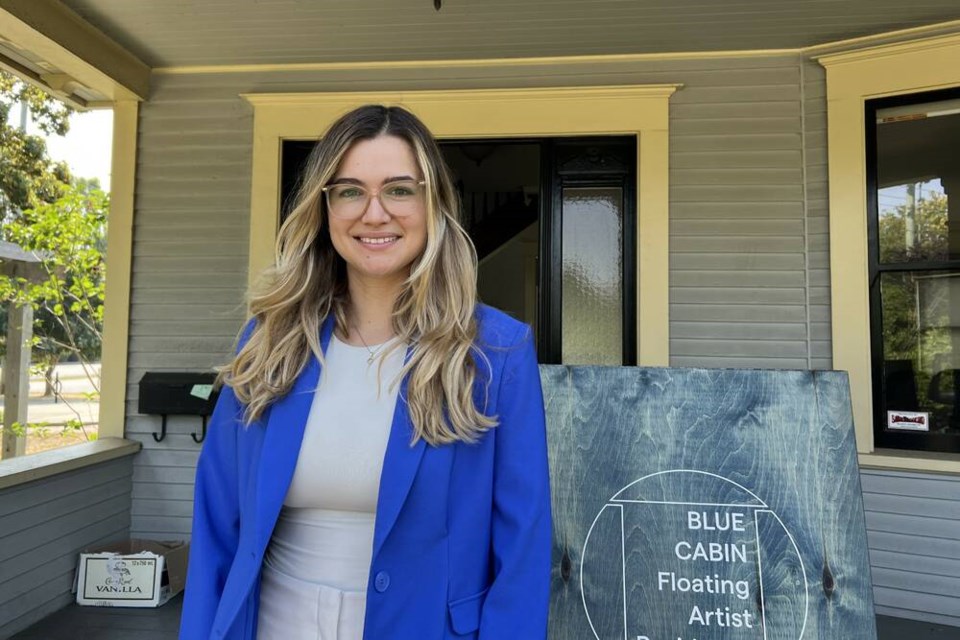A UBC student is calling for more research into underwater noise pollution from smaller recreational boats in the Fraser River estuary off Richmond’s coastline.
Kim St-Pierre, who recently graduated with a master’s in Land and Water Systems, spent four months looking into how noise pollution from smaller boats impacts southern resident orcas.
St-Pierre undertook the project as a Fraser Estuary Research Collective Sustainability Scholar in partnership with the World Wildlife Fund, and presented her findings at Branscombe House in Richmond this past weekend.
She points out that noise pollution from large vessels has been well documented, but has discovered that smaller crafts are not being accounted for in studies.
“For example, acoustic energy underwater travels over four times faster than those on air,” said St-Pierre.
“That means that when there’s a boat travelling, it’s going to be heard over a really large distance, more than we would hear on land or (in) the air.”
The resulting underwater noise pollution can negatively impact the ability of marine mammals, including orcas, to find prey, avoid danger, communicate, rest, reproduce and navigate, according to the non-profit Clear Seas Centre for Responsible Marine Shipping.
In fact, one of the primary threats facing the endangered southern resident killer whales is underwater noise, which prevents them from using echolocation to hunt.
Through a literature review of previous studies and government documents, St-Pierre found orcas are often "being disturbed to the point where it's affecting their ability to forage."
She added that the whales are also experiencing periods of nutritional stress due to diminishing stocks of chinook salmon.
Bridging the data gap
St-Pierre’s solo project aims to bridge a data gap by focusing on vessels under 25 metres, including smaller fishing boats, yachts and jet skis, that are active in the estuary.
Although there are studies on underwater noise pollution in the Salish Sea and in other parts of the world, the Fraser River is often excluded from the research.
“(The lack of data) is especially important later in the summer when the Fraser Estuary becomes an important foraging area for the southern resident killer whales (August to September),” said St-Pierre, adding that that is when chinook salmon returns to the river.
Although studies have shown that a “big percentage” of boats travelling in the Salish Sea are small vessels, they are often not accounted for as, unlike larger vessels, they are not obliged to use the automatic identification system (AIS) and cannot be tracked.
“So as a result, those small vessels are often not counted in studies that look at noise emissions,” she said.
St-Pierre’s research was two-fold — analyzing data from class B AIS data from recreational and smaller commercial vessels and observing activity in the northern arm of the river.
She ultimately found many of the recreational boats she observed had “travelled at relatively high speeds” in the estuary, which would increase the frequency of the sound.
“And because small vessels, they tend to go kind of fast and change direction and trajectories, that can also kind of have an impact (on noise levels) based on their way of navigating,” St-Pierre added.
A Herculean subject to study
One lesson St-Pierre learned from the research project was the complexity of the task at hand, especially when analyzing small vessels.
“They’re definitely a big challenge logistically to study,” she said.
She added that she wasn’t aware of the impact noise can have on underwater mammals at first, and it took her some time to find her footing in the project.
St-Pierre told the News she was drawn to the project of her fascination with orcas. She first fell in love with them when she wrote a thesis on their culture during her undergrad.
“I was so surprised to read how amazing and interesting these mammals are with (their) culture and social interactions and the way they function,” she said.
“I was really hoping I’d be able to study them… and this project was a good opportunity to do that.”
She unfortunately did not get to see any orcas during the project, but she hopes to expand on her findings in the future.
“It’s such an important area, and I think definitely doing more research related to that would be (of) huge interest to me. So I’m definitely keeping that door open to see where it leads me.”



